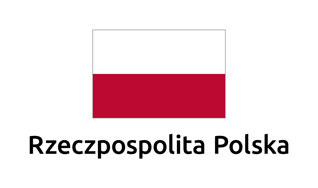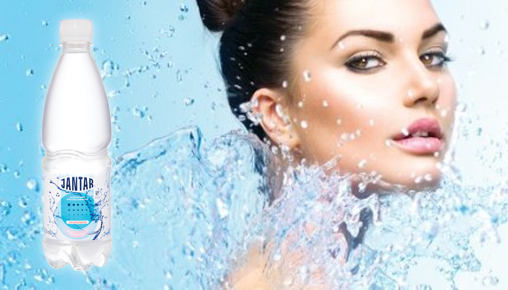Hyponatremia

A disease state of lowering the sodium level in blood serum.
One water is not equal to other… the fastest changing parameter of the human body from day to day is the water and electrolyte balance, especially when the temperature or air humidity are very high. Not everything we drink remains in our bodies, it depends on the quality of the water and what else it provides us with – electrolytes. You can drink water and still be dehydrated!
When there is too much water in the body relative to one of the most important electrolytes – sodium – we talk about hyponatremia. Among all water and electrolyte balance disorders, hyponatremia is the most common disorder, in some patient age groups it is estimated that it affects even 15-30%.
Sodium is the main cation and osmotic factor of extracellular fluid. Although the body may contain up to 4,000 mmol of sodium, only half can be freely exchanged. The kidneys filter approximately 22,300 mmol of sodium (mg) per day. The kidney responds to changes in intravascular pressure and, in intravascular flow, activates the renin-aldosterone system, natriuretic hormones, dopamine, prostaglandins and the sympathetic nervous system. Thanks to this, it can control the amount of sodium excreted and maintain the correct amount of extracellular fluid.
As described above, malnutrition and disease states may alter sodium metabolism in the kidney. Sodium balance can be determined by measuring the sodium content of all fluids lost and administered. The method of daily measurement of body weight and measurement of sodium concentration in plasma is more practical.
More than 90% of the total sodium cation reserves are found in the extracellular fluid. This concentration difference between the inside of the cell and the extracellular area is maintained by the body’s balance mechanisms.
In practice, severe hyponatremia is very rarely observed and is one of the few conditions that are directly life-threatening, accompanying the most severe cases of hypopituitarism, adrenal cortex and thyroid function. Much more often, we may be dealing with mild hyponatremia, which is quickly neutralized by the body in healthy people who eat a relatively “healthy” diet.
| Degree | Sodium Concentration | Symptoms |
|---|---|---|
| Mild | 130-135 mmol/l | Usually asymptomatic |
| Moderate | 120-130 mmol/l | Weakness, nausea, vomiting |
| Severe | 110-120 mmol/l | Headaches, disorientation |
< 110 mmol/l | Respiratory disorders, convulsions, coma |
Hyponatremia in athletes
Excessive fluid intake in relation to fluid losses in urine and sweat is the main cause of hyponatremia, also called “water intoxication”. Hyponatremia may be exacerbated by individual high sodium losses in sweat and, at the same time, by consuming low-sodium fluids. This problem can also be exacerbated by excessive fluid consumption in the hours or days leading up to the competition. The problem of overhydration is usually observed among recreational athletes.
Mild hyponatremia may present as:
- flatulence
- swelling of the limbs
- weight gain
- nausea
- vomiting
- headache
- disorientation
In more severe conditions, we observe: delirium, convulsions, respiratory failure, loss of consciousness, and in the absence of medical intervention, even death. There are many and very diverse causes of hyponatremia, some authors say there are up to 60 of them! One of the most common hypotheses is SIADH syndrome. In this case, the amount of urine produced in the body is reduced while the retention of consumed fluids is increased. Other hypotheses include: sequestration of water in the intestine, the use of nonsteroidal anti-inflammatory drugs (NSAIDs), which may alter kidney function and reduce urine production, high sodium losses in sweat, and excessive alcohol consumption, which may spontaneously cause hyponatremia.
Do women have a higher risk of hyponatremia?
In a report on hyponatremia after the San Diego Marathon, 23 of 26 cases of hyponatremia were women! This may be because estrogen (a female hormone) inhibits the enzyme responsible for moving potassium out of cells, which leads to the imbalance of electrolytes inside and outside the cell.
Key points
- death as a result of hyponatremia in sports is quite rare, but such cases have been reported in the past mainly in endurance athletes – marathon runners, ultra-marathon runners, triathletes – in the nutritional education of athletes in this group, special attention should be paid to this issue!
- hyponatremia occurs when the sodium level in the blood is below 135 mmol/l
- hyponatremia may occur mainly in people who exercise a lot or in people who drink large amounts of pure water without electrolytes
- excessive drinking of clean water without electrolytes is a major risk factor for hyponatremia
- You can reduce the risk of hyponatremia by drinking an optimal amount of fluids and increasing the amount of products that will replenish the loss of electrolytes lost in sweat.
- For most athletes, dehydration is the biggest enemy, limiting the athlete’s exercise capacity
- women are at greater risk of hyponatremia
In order to maintain homeostasis, optimal exercise capacity and a sense of well-being, athletes should strive to maintain adequate levels of hydration before, during and after physical activity. The minimum water requirement is approximately 30 ml for each kilogram of body weight (70 kg -> 2.1 l). if you are active in sports, your demand may increase up to 50-80 ml per kilogram of body weight! Therefore, the recommended 1.5 litters of water a day does not work at all.
Although the body’s response to dehydration is complex and individualized, a water deficit of more than 2% of body weight may negatively affect cognitive functions and exercise capacity during exercise. Therefore, check your sweating rate and choose valuable water, not water that will pass through you!
With sweat we lose
- water
- sodium – varying amounts that depend on each individual
- potassium
- calcium
- magnesium
In the case of individual high sodium losses in sweat, it is recommended to consume it even during physical exercise. This applies in particular to athletes with a high sweating rate (>1.2 L/h), high sodium concentration in sweat or situations in which the duration of physical exercise exceeds 2 hours. Despite high inter-individual variability, the average sodium concentration in sweat is approximately 1 gram per litter of sweat.
The feeling of thirst is often the first corrective signal to restore the proper functioning of the body. Even though sometimes you don’t feel like reaching for a bottle – do it!
The most frequently observed symptom of dehydration is muscle cramps – most of us will immediately associate it with magnesium supplementation, but magnesium is a small part of electrolyte disorders, it is much more important to restore proper hydration and replenish electrolytes such as potassium, sodium and chlorine!
After exercise
Depending on the rate of sweating, intensity, duration of exercise, environmental conditions, altitude above sea level or products consumed before exercise – there is usually a water deficit after training. Research shows that fluids with a higher sodium content hydrate the body much better than drinks that do not contain it. Therefore, choose a good-quality source of hydration.
Clinical assessment of hydration status
Laboratory tests:
- Blood count: hematocrit, hemoglobin, MCV, MCH
- Electrolyte concentrations
- Blood gas test
- Serum urea and creatinine concentrations
- Serum and urine osmolarity
- Serum protein concentrations
- Specific gravity of urine
- Urine electrolyte concentrations








